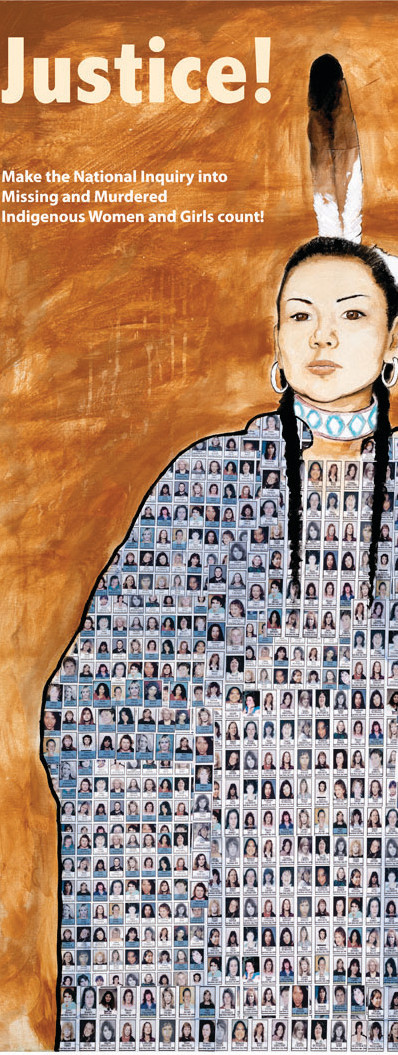
MISSING AND MURDERED INDIGENOUS WOMEN
THE HIGHWAY OF TEARS
CASES OF MISSING AND MURDERED INDIGENOUS WOMEN IN CANADA
Highway of Tears refers to about a 450-mile section of the Yellowhead, Highway 16, the Trans-Canada Highway through northern British Columbia. This remote location has been given this title for the high occurrence of disappearances and deaths of Indigenous women. Twenty-three First Nations are located around Highway 16 and the region is characterized by poverty and lacks adequate public transportation, which forces many locals to resort to hitchhiking as a form of transit. The highway of tears is vastly associated with this violence, however the conditions of this Canadian highway are further symbolic of national oppression of Indigenous women, and may serve as a microcosm of centuries of systematic violence against Indigenous women that is embedded in racism, sexism, and colonialism.


NO MORE STOLEN SISTERS
The Royal Canadian Mounted Police (RCMP) released “The Missing and Murdered Aboriginal Women: A National Operational Review” which found for the period between 1980-2013, that there is a total of 1,017 cases of murdered Aboriginal women and a total of 164 cases of missing Aboriginal women. The statistical analysis of this data by the RCMP revealed that Indigenous women make up 4.3 percent of the Canadian population but accounted for 16 percent of murdered women and 11.6 percent of missing women. While the police reported an overall total of missing and murdered Aboriginal women is 1,181 with 225 unsolved cases, the Canadian government minister and research and collaboration with Indigenous communities by the Native Women’s Association of Canada suggest the number of missing and murdered women is much higher and the total number could be as high as 4,000. Between 2008 and 2011 activists working for the Walk 4 Justice initiative started collecting the names of indigenous women who are missing or murdered and they stopped counting when they got to 4,232. The RCMP further concluded that Indigenous women are four times more likely to go missing or be murdered than non-indigenous women. Unfortunately most of these cases remain unsolved and receive little attention. Victims’ families and Indigenous activist continuously struggled for a national inquiry into these cases until Prime Minister Justin Trudeau finally launched one in 2015. The Committee on the Elimination of Discrimination against Women (CEDAW) declared that the Canadian government’s prolonged inaction was a grave violation of the human rights.
CONTEXT OF THE U.S.
no one wants to talk about it!
Unfortunately little information exists addressing the issue of missing and murdered Indigenous women in the Unites States.
What we do know: The U.S. Department of Justice has found Native women face murder rates that are more than 10 times the national average.
“At a recent conference someone asked why is the rate so high? Is it a serial murderer?
The disappearance and murder rate of Native women is not new. It began with the colonization of
our nations,” said Terri Henry, Co-Chair, NCAI Task Force. “It is the result of the public perception that nothing will be done when a Native women disappears or is murdered. And yes, it is the result of the United States removing the authority of Indian tribes to protect women.”







